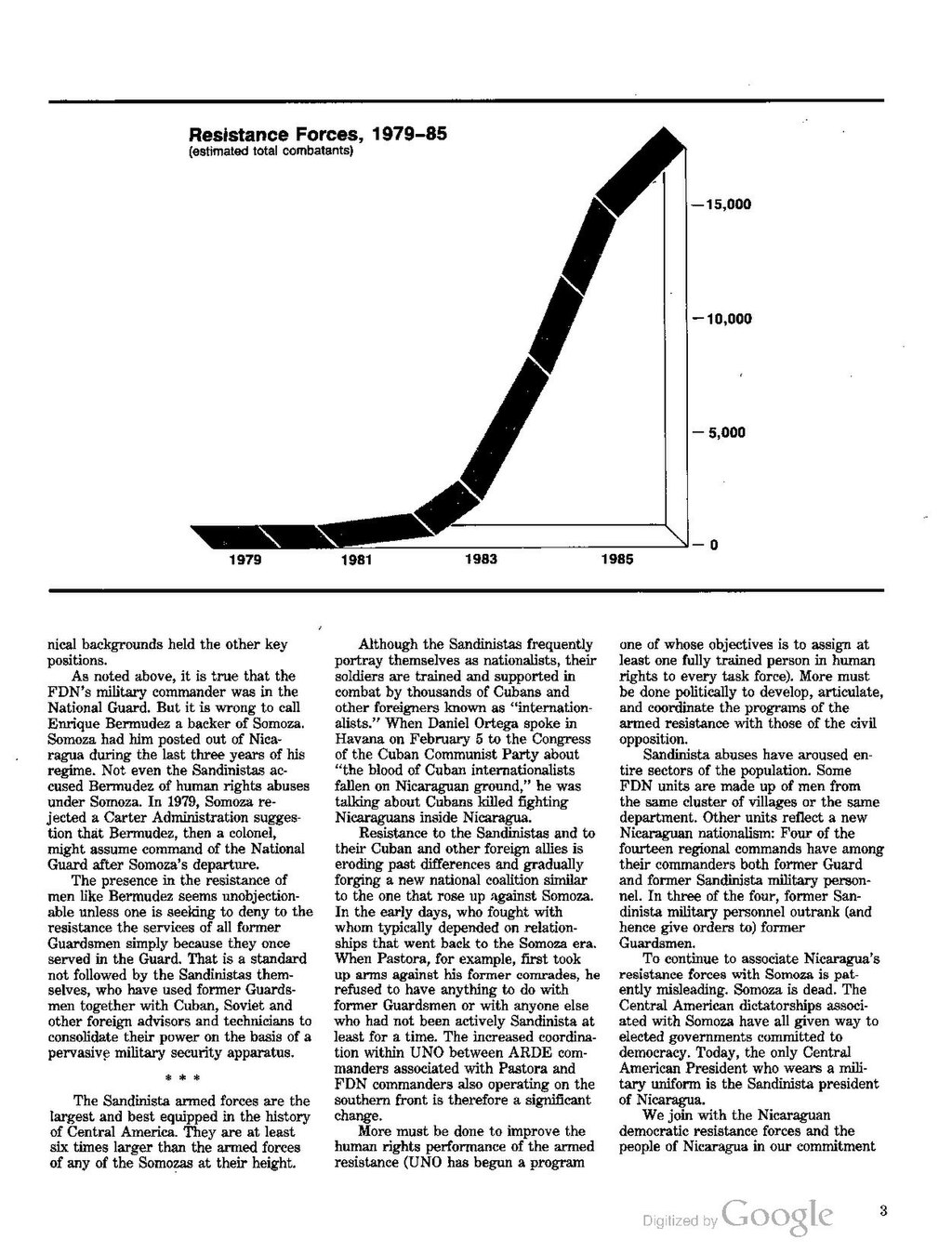
nical backgrounds held the other key positions.
As noted above, it is true that the FDN's military commander was in the National Guard. But it is wrong to call Enrique Bermudez a backer of Somoza. Somoza had him posted out of Nicaragua during the last three years of his regime. Not even the Sandinistas accused Bermudez of human rights abuses under Somoza. In 1979, Somoza rejected a Carter Administration suggestion that Bermudez, then a colonel, might assume command of the National Guard after Somoza's departure.
The presence in the resistance of men like Bermudez seems unobjectionable unless one is seeking to deny to the resistance the services of all former Guardsmen simply because they once served in the Guard. That is a standard not followed by the Sandinistas themselves, who have used former Guardsmen together with Cuban, Soviet and other foreign advisors and technicians to consolidate their power on the basis of a pervasive military security apparatus.
***
The Sandinista armed forces are the largest and best equipped in the history of Central America. They are at least six times larger than the armed forces of any of the Somozas at their height.
Although the Sandinistas frequently portray themselves as nationalists, their soldiers are trained and supported in combat by thousands of Cubans and other foreigners known as "internationalists." When Daniel Ortega spoke in Havana on February 5 to the Congress of the Cuban Communist Party about "the blood of Cuban internationalists fallen on Nicaraguan ground," he was talking about Cubans killed fighting Nicaraguans inside Nicaragua.
Resistance to the Sandinistas and to their Cuban and other foreign allies is eroding past differences and gradually forging a new national coalition similar to the one that rose up against Somoza. In the early days, who fought with whom typically depended on relationships that went back to the Somoza era. When Pastora, for example, first took up arms against his former comrades, he refused to have anything to do with former Guardsmen or with anyone else who had not been actively Sandinista at least for a time. The increased coordination within UNO between ARDE commanders associated with Pastora and FDN commanders also operating on the southern front is therefore a significant change.
More must be done to improve the human rights performance of the armed resistance (UNO has begun a program one of whose objectives is to assign at least one fully trained person in human rights to every task force). More must be done politically to develop, articulate, and coordinate the programs of the armed resistance with those of the civil opposition.
Sandinista abuses have aroused entire sectors of the population. Some FDN units are made up of men from the same cluster of villages or the same department. Other units reflect a new Nicaraguan nationalism: Four of the fourteen regional commands have among their commanders both former Guard and former Sandinista military personnel. In three of the four, former Sandinista military personnel outrank (and hence give orders to) former Guardsmen.
To continue to associate Nicaragua's resistance forces with Somoza is patently misleading. Somoza is dead. The Central American dictatorships associated with Somoza have all given way to elected governments committed to democracy. Today, the only Central American President who wears a military uniform is the Sandinista president of Nicaragua.
We join with the Nicaraguan democratic resistance forces and the people of Nicaragua in our commitment
